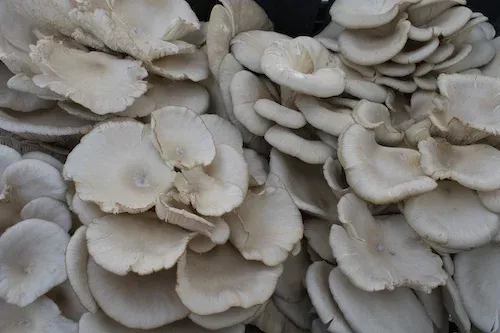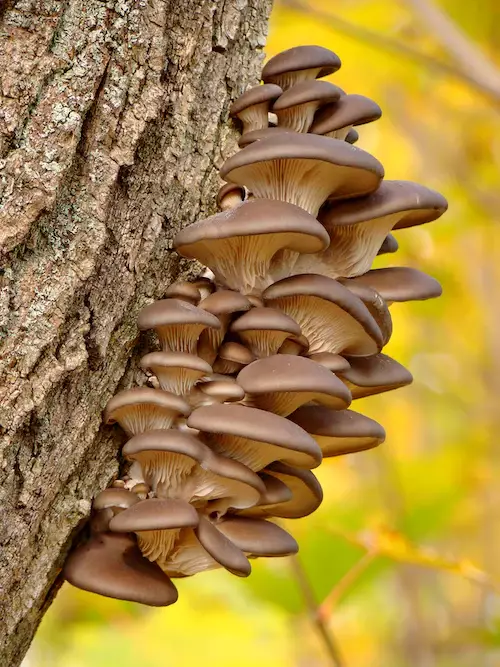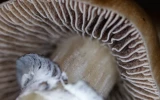How To Increase Oyster Mushroom Yield (5 Easy Steps)
Oyster mushrooms not only taste delicious, but they can be sold for a profit. If you are looking to increase the yield of your oyster mushrooms, you are in the right place. The following guide will walk you through five easy steps to help you increase the yield of your oyster mushrooms.
To increase mushroom oyster yield, first mist the environment or install a humidifier to increase humidity levels. Second, reduce overcrowding in the growing area. Third, adjust the temperature to between 65 and 75 degrees Fahrenheit. Fourth, add supplemental lighting. Lastly, use a balanced, nutrient-dense substrate.
Increasing oyster mushroom yield is an achievable goal with a few simple steps. Let's discover what the potential yield of an oyster mushroom is.
Summary
- Oyster mushrooms can be grown indoors or outdoors and can be a great addition to any garden.
- To increase yields, the right growing conditions must be established, including moisture, temperature, and light.
- Proper care and maintenance, such as aeration, pruning, and composting, are key to achieving a higher yield of oyster mushrooms.

On this page:
Here Are 5 Easy Steps to Increase Oyster Mushroom Yield
Growing oyster mushrooms can be an enjoyable and rewarding activity. Follow the five easy steps outlined below to help you increase oyster mushroom yields and maximize your harvest.
1. Increase humidity levels in the growing area by misting the environment or installing a humidifier
Increasing humidity levels in the growing mushroom area is an important step in mushroom cultivation. High humidity levels promote rapid mushroom growth and support healthy mushroom development. Without adequate humidity, mushrooms will not produce a good yield or may not even form at all.
Misting the environment is a common method of increasing humidity levels in mushroom-growing areas. This is done by using a misting system to spray water droplets into the air. The misting system may be adjusted to manage the quantity of moisture in the air. The humidity level may be raised to the appropriate level by sprinkling the area.
Another way to increase humidity levels in the mushroom-growing area is to install a humidifier. Humidifiers are devices that add moisture to the air. They can be set to specific humidity levels and will keep the area at the desired humidity level. The humidity level is usually adjusted to around 70–90%.
Mushroom growers should monitor the humidity levels regularly to ensure that they remain within the desired range. This can be done with a hygrometer, which is a device used to measure the amount of moisture in the air. Too much or too little humidity can lead to poor mushroom growth and even cause mushrooms to rot or die.
2. Reduce overcrowding in the growing area to give each mushroom more space to grow
It is critical to allow each mushroom more space to develop to minimize overpopulation in a growing area. This can be done by:
- Thinning out the mushrooms in the area so there is more room for each one to expand.
- Removing any mushrooms that are too close together or any that are larger than the others.
- Mushrooms can be spaced out more evenly by using a grid or pattern for planting.
Another way to reduce overcrowding is to increase the amount of organic matter in the growing area. This can be done by:
- Adding compost or other organic material to the soil creates more space for the mushrooms to grow.
- Applying mulch around the mushrooms can help reduce the number of weeds and other plants competing for space.
3. Adjust the temperature to between 65 and 75 degrees Fahrenheit for optimal yield
For optimal yield, the temperature needs to be adjusted to between 65 and 75 degrees Fahrenheit. This optimal temperature is necessary for mushrooms to grow to their full potential and yield the most edible mushrooms.
At temperatures lower than 65 degrees Fahrenheit, the mushrooms may not grow at all or may grow slowly, resulting in a poor yield. If the temperature is higher than 75 degrees Fahrenheit, the mushrooms may grow too quickly and become overripe, resulting in a lower-quality product.
To adjust the temperature to the optimal range, one can use an air conditioner or heater, depending on the current temperature. For example, if the temperature is too low, the air conditioner can be used to heat the air. On the other hand, if the temperature is too warm, the heater can be used to cool the air.
Additionally, the use of a humidifier can help maintain the humidity level at an optimal level. Mushrooms prefer a humidity level of around 80%, so it is important to monitor the humidity level and adjust it accordingly.

4. Add supplemental lighting to increase the amount of light the mushrooms receive
Adding supplemental lighting to increase the amount of light mushrooms receive can be beneficial for their growth. Supplemental lighting can be provided in a variety of ways, such as with artificial grow lights, natural sunlight, or a combination of both.
Artificial grow lights provide a more consistent light source and can be adjusted to provide the optimal amount of light for the specific species of mushroom. Natural sunlight can also be used, although it is more difficult to control and may not always be available.
When using artificial grow lights, it is important to ensure they are placed at the appropriate distance and angle to provide the desired amount of light. Additionally, the type of bulb used should be appropriate for the species of mushroom being grown. Some bulbs emit more heat than others, which can be detrimental to the growth of certain species.
When using natural sunlight, the mushrooms should be placed in an area that receives the most direct sunlight available. It is also important to ensure that the mushrooms are not placed in direct contact with the sunlight, as this can cause burning or wilting.
5. Use a balanced, nutrient-dense substrate to provide the mushrooms with the necessary nutrients for growth
Substrates provide the building blocks that mushrooms need to thrive and produce quality mushrooms. Substrates can be made from a variety of materials, such as straw, sawdust, wood chips, and organic compost. Each of these materials can provide the mushrooms with the necessary nutrients, but the most important factor is that the substrate be balanced and nutrient-dense.
A balanced, nutrient-dense substrate should contain the three macronutrients (nitrogen, phosphorus, and potassium) as well as other essential micronutrients (such as calcium, magnesium, and sulfur).
- Nitrogen is required for mushroom growth and development because it is utilized to create proteins and enzymes that are required for growth and metabolism.
- Phosphorus is also important for mushroom growth and development and is used in cell division and energy metabolism.
- Potassium is essential for mushroom growth and metabolism and is used by the mushroom for water regulation, cell division, and enzyme activation.
- Calcium is used for cell wall integrity and metabolism.
- Magnesium for energy metabolism and enzyme activation.
- Sulfur for amino acid synthesis and protein production.
These nutrients can be provided through the addition of organic compost, manure, or other supplements.

How Much Does An Oyster Mushroom Produce
Oyster mushrooms can yield anywhere from one to four pounds of mushrooms per square foot of growing space per year, depending on the growing conditions. The mushrooms can be harvested multiple times throughout the year with careful management.
Oyster mushrooms are fast-growing and can be harvested within two to four weeks of inoculation, sometimes even sooner. However, the total yield of a crop can vary significantly depending on the strain, the growing conditions, and the skill of the grower.



